Pembrokeshire is a land of infinite mystery – an enchanting part of Wales that offers endless layers of intrigue, fascination and beauty – here are three guides covering the county from north to south:
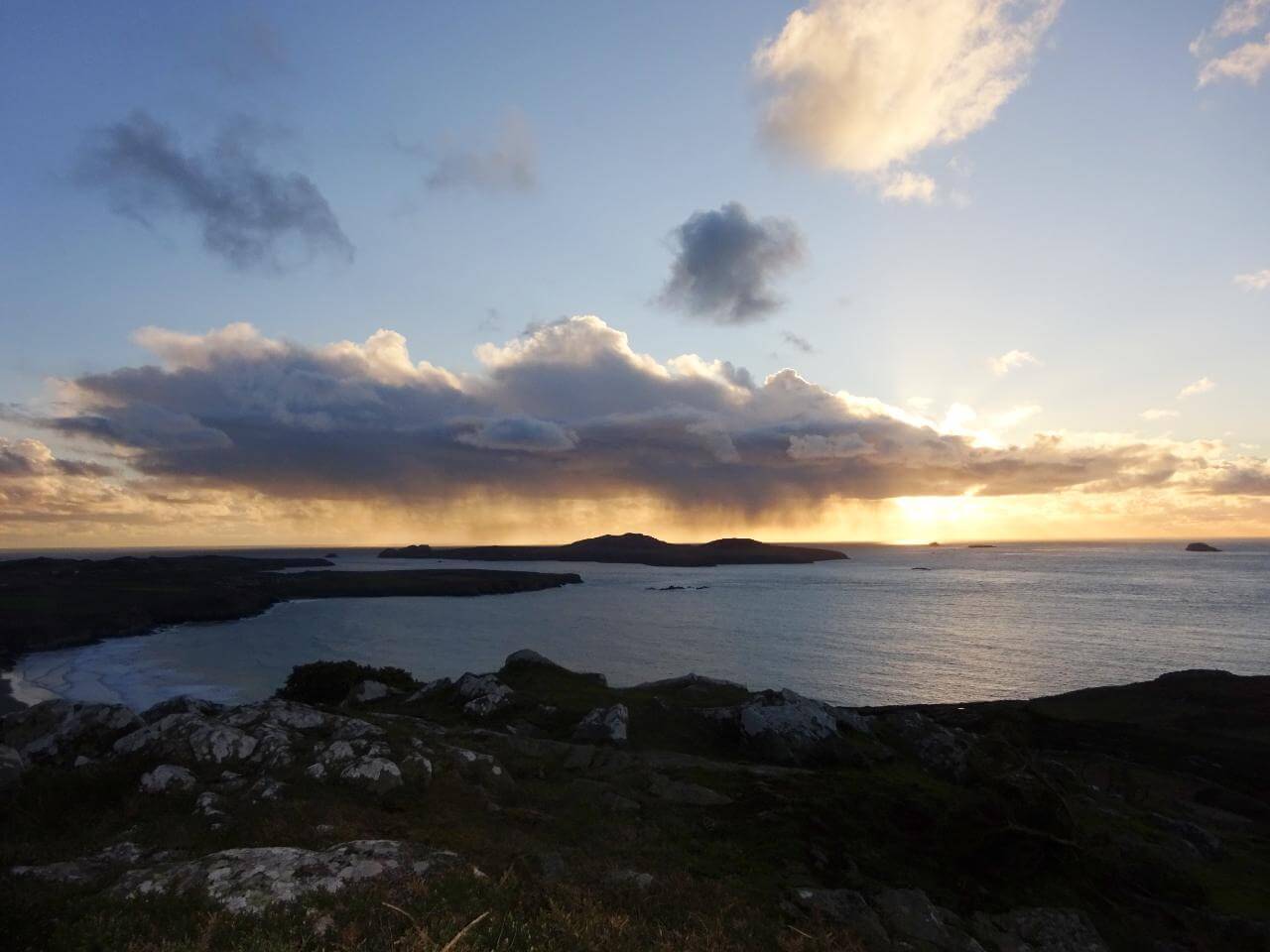
NORTH PEMBROKESHIRE – from Pen Caer to the holy mountain
Begin your northern meanderings on Pen Caer, sometimes known as the Pencaer Peninsula – a mesmerising place west of Fishguard, often missed by visitors – at St. Gwyndafs Church in Llanwnda, you’ll discover an array of 7-11th Century carved stones in the outside walls, including an astonishing carved face and cross.
This was the homeplace of the Breton Saint, Gwyndaf – one of the early Christian holy men who retreated to this remote coastline, taking their hermitic inspiration from the Egyptian Desert Fathers.
Walk from the church down to Carreg Wastad Point – the landing point for the ‘last invasion of mainland Britain’ – a French and Irish incursion that took place in 1797, aiming to divert British attention from Ireland in the run-up to the rising of United Irishmen in 1798.
From Llanwnda, head west to Pwll Deri on the west coast of Pen Caer, which offers spectacular views along the the St. Davids Peninsula – from there, you can climb the adjacent rocky volcanic outcrop of Garn Fawr – home to one of the finest Iron Age hillforts in Britain.
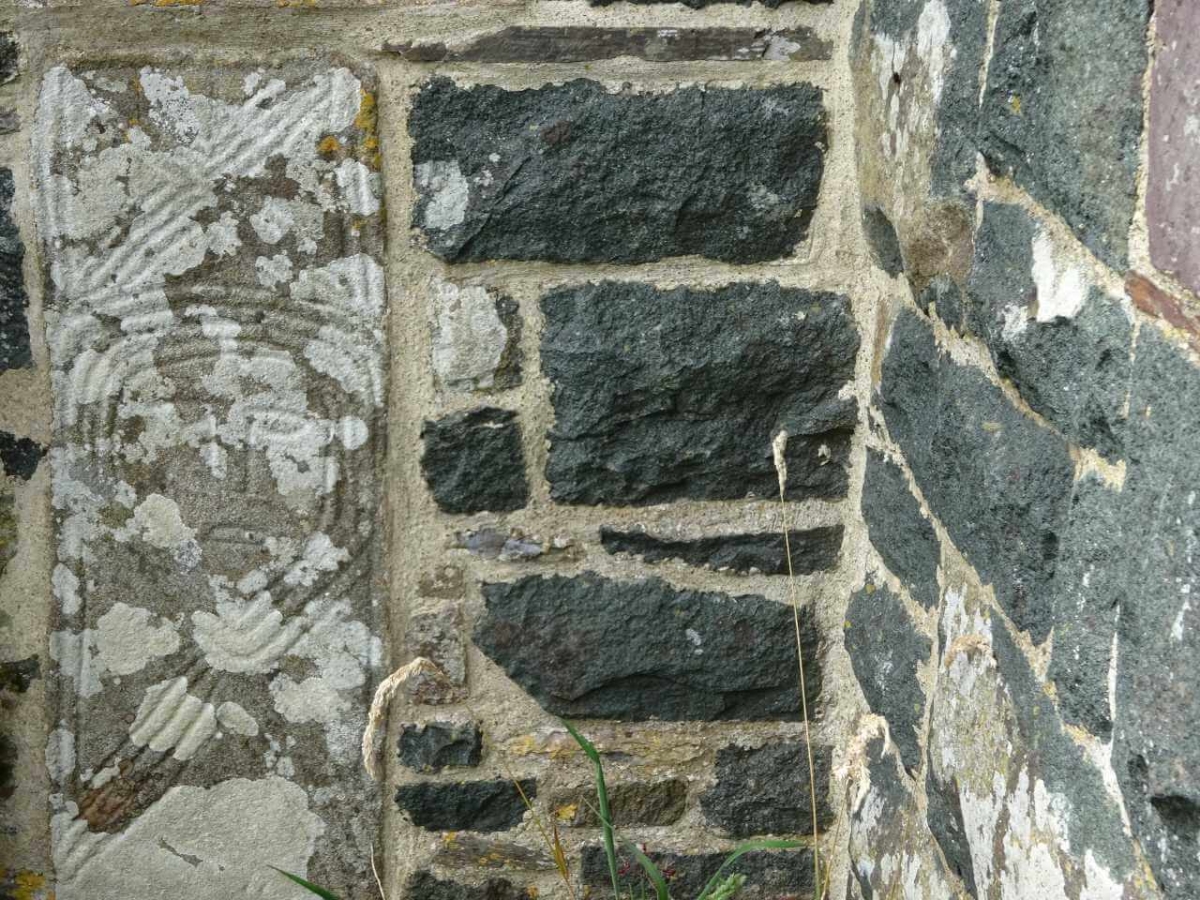
Nearby Strumble Head, best known for its lighthouse, provides a superb viewpoint for watching the wildlife that comes and goes along this stretch of coast, including cetaceans such as bottle-nosed dolphins and minke whales; the observation post is great for spotting the many birds that inhabit the area, or migrate through, including storm petrels and skuas.
To find out more about the local marine life, travel to the Ocean Lab in Goodwick, home of the Sea Trust. From there meander up to the medieval town of Newport – on your way there, you might like to stop off at Llanllawer Holy Well.
Wales is rich in holy wells – places of worship, healing, divination and, in this case, cursing – a coin or straight pin would be thrown in for healing, a bent pin for a curse, with the cursing tradition perhaps rooted in Roman tradition.
It’s above Newport that you’ll discover one of Wales’s most significant holy mountains – Mynydd Carningli, or Carn Ingli – St. Brynach is said to have communed with angels upon the mountain in the 6th Century, hence the name – he was an Irish saint whose clas, or settlement, was in the nearby village of Nevern.
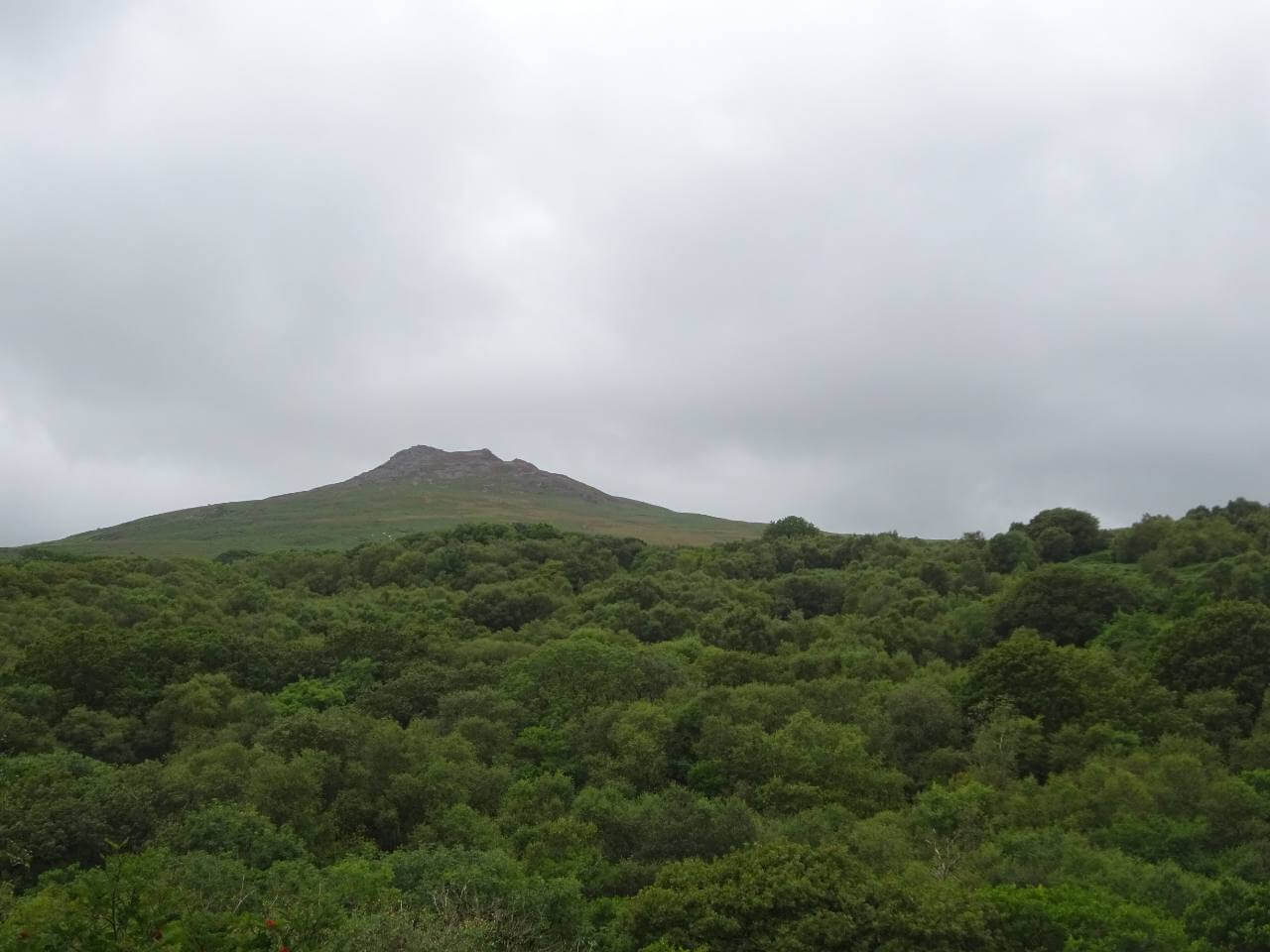
The views from the summit are truly astonishing – on a clear day you can see Ireland, and right along the southern edge of Pen Llŷn (the Llŷn Peninsula in North Wales) to Ynys Enlli – Bardsey Island, the burial place of 20,000 saints according to legend, and one-time burial place of Dyfrig who brought the hermetic traditions of North Africa to Wales.
Here, you are in the land of Cuhelyn Fardd, or Cuhelyn the Bard – a mystical figure and seer. and ancestor of the hugely important Welsh poet, Dafydd ap Gwilym, who is referred to by some as the Welsh Chaucer. Dafydd was inspired to write poetry by his local uncle, Llywelyn ap Gwilym – including some enchanting nature poetry. Llywelyn held land at nearby Llystyn – and also at Dolhaidd and Cryngae in the Teifi Valley.
Without Cuhelyn’s family, the Preseli Mountains might’ve ended up as a partly enclosed hunting ground – but his sons resisted the Anglo-Norman FitzMartins, and succeeded in preventing any such enclosure, preserving the wild openness of this sublime part of Wales.
From Carn Ingli, you might like to explore the hugely impressive Neolithic Chambered Tomb known as Pentre Ifan, dating back thousands of years. The capstone is said to weigh 16 tonnes, and rests around 8 feet off the ground, on 3 other stones. The nearby rock outcrops of Carnedd Meibion Owain are also well worth a visit – according to legend, these outcrops were once the sons of a giant named Owain, who fought each other for their inheritance on this spot.
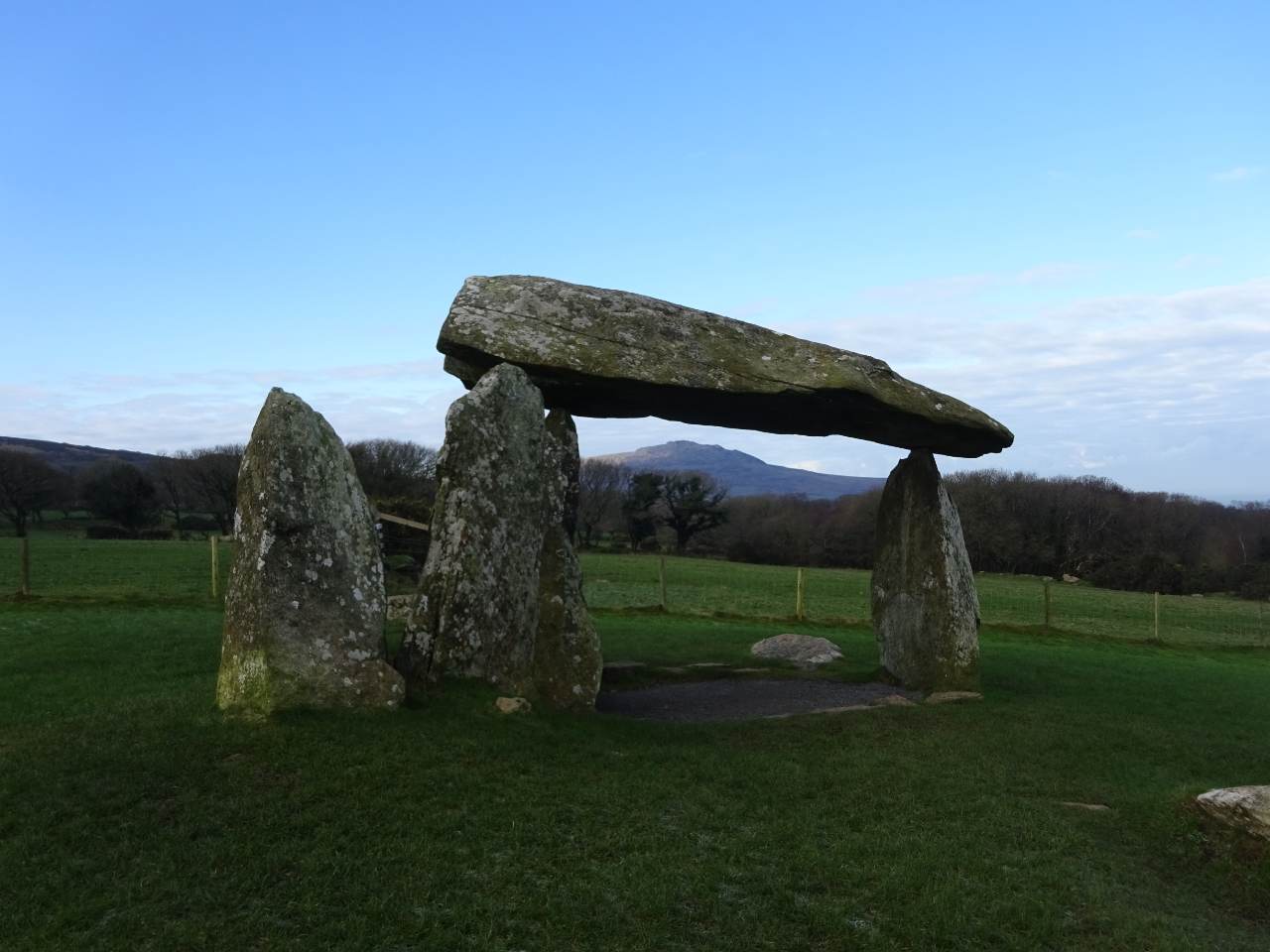
Travel east of Newport on the main A487 Cardigan road, and you’ll find Castell Henllys – the reconstruction of a Celtic village, built upon the site of an actual Iron Age settlement. Run by the Pembrokeshire Coast National Park, this popular attraction includes a cafe, an interactive visitor centre and family activities right through the year.
Then strike out into the heartland of the Preselis, deep into a wonderfully liminal upland landscape of wild moorland, heath and grassland. You’ll spot the hillfort of Foel Drygarn over towards Crymych – the foundations of 200 huts have been identified by archaeologists, so this was clearly a tribal capital of sorts in ancient times – it’s well worth the relatively short climb.
MID PEMBROKESHIRE – from St. David to Black Bart
Now it’s time to look closer at the cathedral city of St. Davids, which is the size of a village with a population of under 2,000 – one of the greatest shrines of Christendom, St. Davids is the Christian capital of Wales, and birthplace of “St. David” – the nation’s patron saint.
Many saints and scholars studied in this great centre of Christian learning, with others living as hermits along this coastline and in the wider hinterland, well hidden from the world – taking their inspiration from the holy men and women who escaped worldly corruption in the deserts of North Africa.
It is here you’ll discover a rugged and wind worn landscape rich in mystery, archaeology and ancient spiritual places – a northern ‘desert’ ideal for retreat, contemplation and reflection.
Begin your wanderings at St. David’s Cathedral – an imposing Anglo-Norman cathedral, started in 1181 and built in a sheltered valley upon the site of a much earlier monastic community. Within the cathedral you’ll find St. David’s restored shrine, as well as many other points of interest – don’t miss the nearby ruins of the Bishop’s Palace, and the carved stones in the lapidarian.
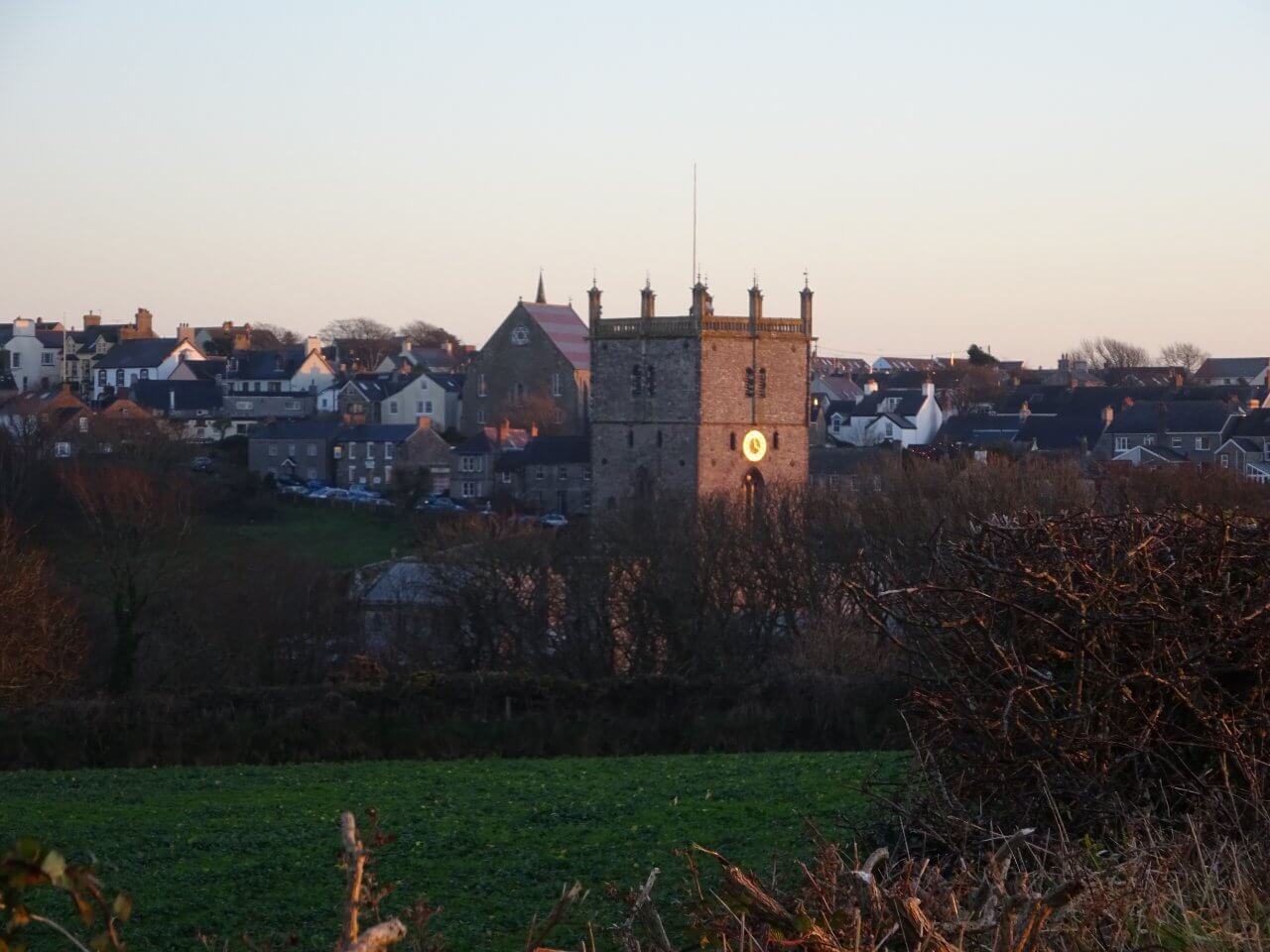
Then make your way up a narrow lane to St. Non’s Well – named after the mother of St. David, this healing well stands against the stunning backdrop of St. Bride’s Bay and is said to mark the birthplace of St. David – you’ll find a beautifully simple 7-9th inscribed Latin ring cross in the nearby ruin of St. Non’s Chapel.
Continue your journey to the harbour of Porth Clais, strongly associated with the rather terrifying Twrch Trwyth – a huge enchanted boar hunted by Arthur and his Knights in the Mabinogion – Britain’s oldest record of ancient legends, set down in the 12th-13th Centuries. The harbour wall is said to date back into the mists of time, and St. David is thought to have been baptised at a well-hidden holy well adjacent to the National Trust car park.
To the Irish, St. Davids was known as Kilmuine, or Cill Muine – roughly translating as the church in the thicket – it was of huge importance to Ireland, and a major centre of learning – many Irish saints are associated with the area, including Patrick, Ailbe, Finbarr, Declan, Molua, Finnian of Clonard and Aidan of Ferns, who was a great friend of St. David.
St. David is said to have arranged transport for St. Aidan, by means of a wild beast! According to the tale, David told Aidan to “go to the sea, and whatever animal shall meet thee on the strand, mount upon it and it will bear thee speedily to Ireland” – we can only guess the nature of the creature that conveyed the saint across the sea to Inber Crimthainnin in what is now County Wexford.
Perhaps Aidan set out from Whitesands beach, or Porth Mawr – a magnificent landing point for Irish pilgrims back in ancient times, above which is a well named Ffynnon Faiddog after Aidan, which local people are attempting to restore.
This incredible sandy beach is well worth a visit out of season, avoiding the summer months when it tends to become unpleasantly busy – a great place to relax or head out to sea on a kayak or surfboard, or you may prefer to hike along the coast path to the wild and wonderful St. Davids Head, where the Irish Sea meets the Atlantic Ocean.
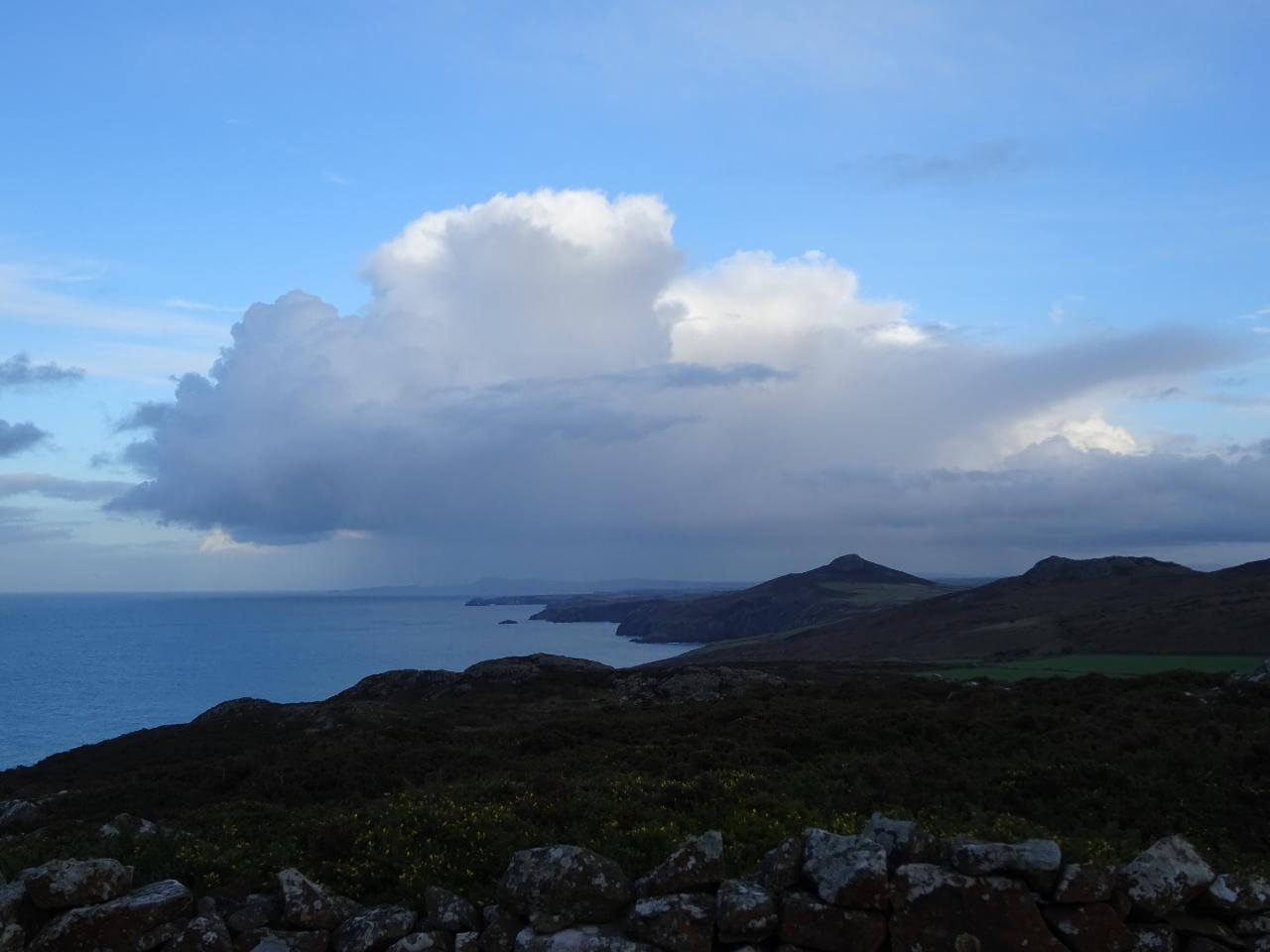
The local National Park coastline is teeming with wildlife, with nearby Ramsay Island home to the largest colony of Atlantic grey seals in Southern Britain – if you take a local boat trip, you may well be lucky enough to see porpoises and dolphins too.
Then travel east to Solva, where you’ll find a pretty coastal village that’s been a seafaring community for many centuries – possibly taking its name from the Vikings. Today, Solfach is full of bright and cheerful galleries and cafes, yet at one time the place held a dark reputation for smuggling and piracy, widely known for the contraband concealed in its hidden stores and shafts. When you visit, hike to the Gribin headland for spectacular views of the harbour.
Pembrokeshire’s coastline was a lawless place right through to Napoleonic times – the haunt of pirates, wreckers and smugglers. Story and legend connects the pirate named Bartholomew Roberts with Solva and the wider coastline.
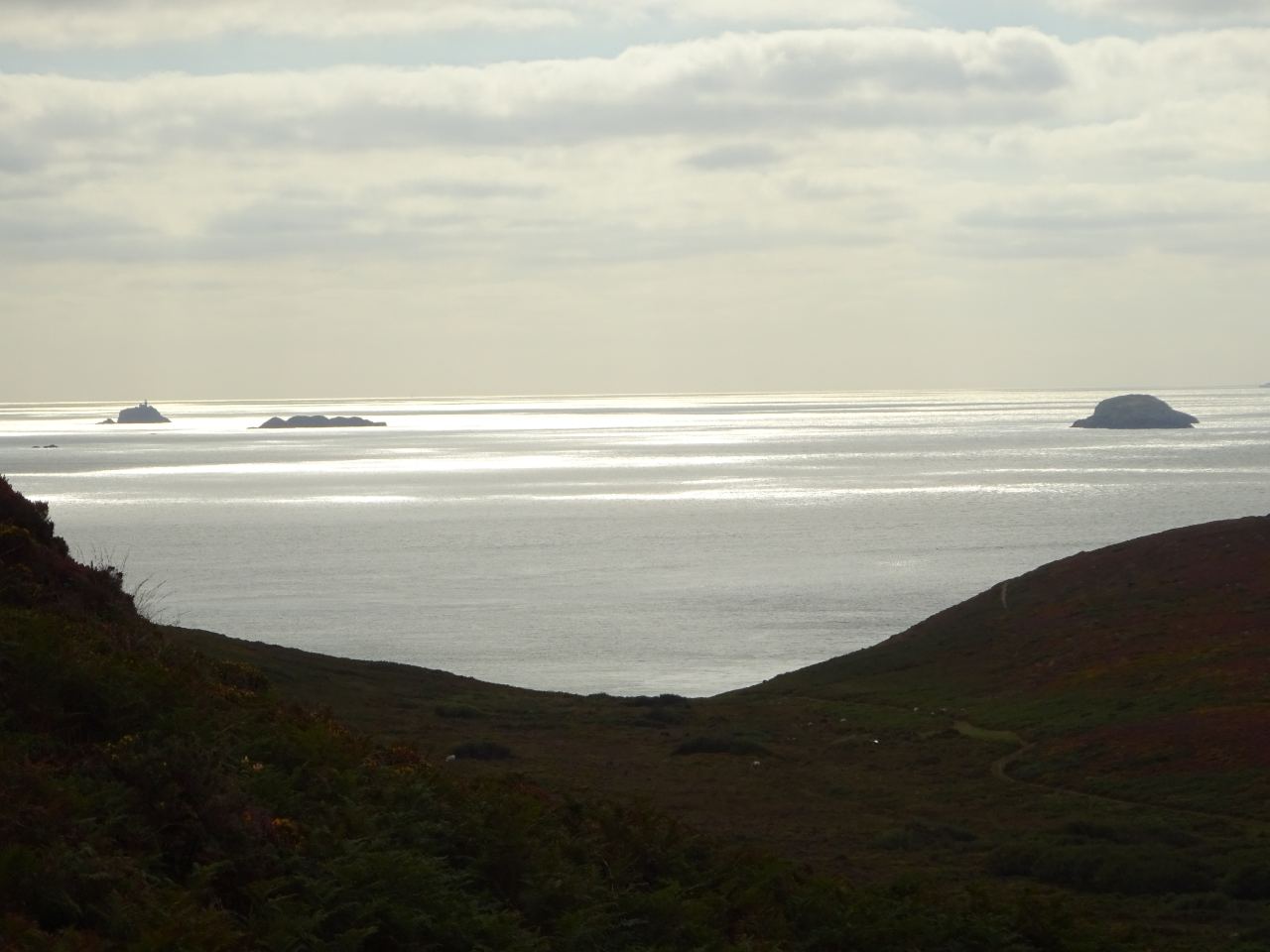
One of the most notorious pirates to ever sail the seven seas, Black Bart, or Barti Ddu, is known to have captured over 400 ships before dying in battle with the Royal Navy off the coast of Gabon in Africa. To this day, he is commemorated by a plaque in his home village of Little Newcastle, a few miles inland.
Now make your way east to Newgale – one of the finest beaches in Britain, stretching for nearly 2 miles and backed by a shingle ‘barrier beach,’ formed when sea levels rose at the end of the last Ice Age. A fierce tempest broke here when St Caradoc’s body was being conveyed to St. Davids, for burial…
His bearers fled for cover, yet on their return were amazed to find the bier and body completely dry – a chapel was built to commemorate the location of the miracle and, although this building has long since disappeared, Caradoc’s shrine can be visited in St. Davids Cathedral.
From here, you might like to explore further into the hinterland, perhaps on a self-guided Saints and Stones tour, exploring the historic pilgrim routes that thread their way to St. David’s, marked by ancient churches and chapels.
Or travel east to see the Landsker castles, which stretch over 30 miles from this western edge of Pembrokeshire to Laugharne in Carmarthenshire – the remains of dozens of castles can be found along this medieval frontier – most are on private land, so can’t be visited, yet there are plenty that can still be explored, including those at Wiston, Llawhaden, Carew, Narberth and Laugharne itself.
SOUTH PEMBROKESHIRE – from Pembroke Castle to John Paul Jones
Switching to the south of the county, we end up in a land of knights, castles, medieval towns and even an island monastery. This heartland of a major Anglo-Norman colony battled the native Welsh to the north and east, from behind a defensive frontier of castles – dotted along what is today known as the Landsker.
Begin your medieval meanderings at Mill Bay, near the picturesque village of Dale at the mouth of the Milford Haven Waterway. This is where the Pembroke Castle born Henry Tudor landed on 7th August 1485, along with many ships and thousands of soldiers – on his way to defeat Richard III at Bosworth, a battle that marked the birth of the Tudor dynasty.
As he moved inland from the beach, Henry is said to have remarked it was “brunt going”, brunt meaning hard – according to tradition, that’s how nearby Brunt Farm got its name. Mill Bay lies on the Wales Coast Path but if you are travelling by road, park at the National Trust’s Kete Car Park, which is free – and walk just over a mile to the bay from there, via St. Ann’s Head.
This stretch of remote and rocky coastline offers some of the best walking anywhere in Britain – nearby Marloes Sands is a gorgeous 1.5 mile curve of beach, facing into the full force of the Atlantic Ocean. And you may be tempted by an excursion to the offshore islands of Skomer, Skokholm and Grassholm, all of them rich in wildlife, mystery and legend.
Skokholm and Skomer were both significant offshore smuggling depots, and many suggest Grassholm was the island of Gwales in the Mabinogion, where the severed head of Brân the Blessed was kept alive for 80 years; today it’s home to one of the world’s most important gannet colonies.
Now head across the Cleddau Bridge to the mighty medieval fortress town of Pembroke – standing on a rocky promontory overlooking the river, Pembroke Castle features a huge dome-roofed keep, and was the birthplace of Henry Tudor who is commemorated by a bronze statue on Mill Bridge.
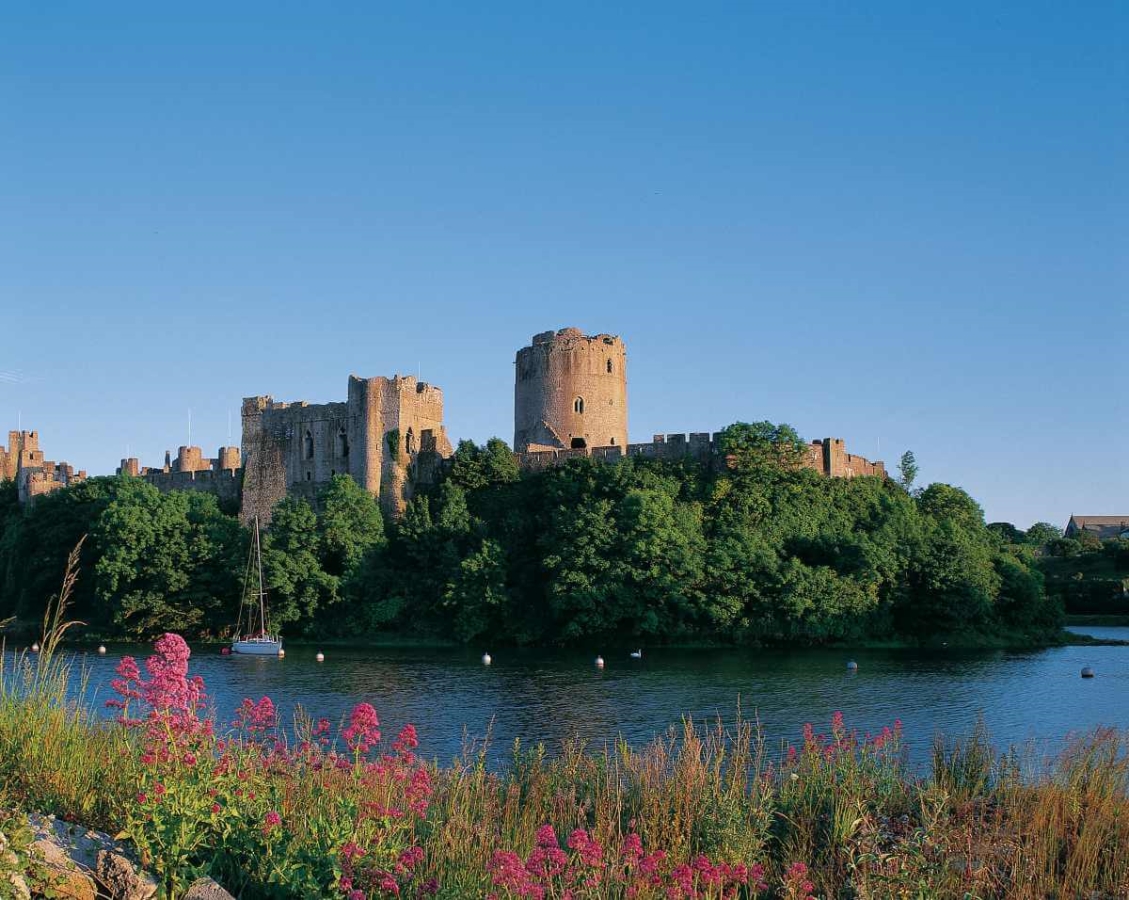
Pembroke was also the home of William Marshall, who came to be known as ‘the greatest knight in the world’ by the time of his death, and not without reason – his life was so extraordinary, it’s akin to legend in parts! Beyond the castle, the ‘Pembroke Town Trail’ is a popular digital guide to the town – you might like to walk the 900 year old walls, or wander up to the Priory Church of St Nicholas and St John – restored in the 1880’s, having once served as the town’s Benedictine Priory.
The Reverend Tudor Evans once lived in the Old Hall, part of the former priory, and was regularly disturbed by an unexplained knocking on his bedroom door, and much besides. Some suggest the reason for the haunting lay in the church itself, where the remains of a kneeling woman, perhaps a nun, were found bricked up behind the remains of the Priest’s Room.
Head south to fascinating Stackpole, said to be named after the Anglo-Norman crusader knight, Leonard de Stackpole – you’ll find plenty to explore here, including the beautifully landscaped Bosherston Lily Ponds, the harbour at Stackpole Quay, and the world-famous beaches at Barafundle Bay and Broadhaven South Beach (Bosherston) – don’t miss the historic Stackpole Elidor Church!
It’s here, on the National Trust’s Stackpole Estate, that you’ll come across the 1.7m high Devil’s Quoit – erected on the site of a circular structure that burned down over 3,000 years ago, this is one of the ‘Dancing Stones of Stackpole’ – standing stones said to meet and dance to the Devil’s music until dawn on a certain day each year, before heading back to their usual positions… a curious tale indeed.
Then travel along the coast to Manorbier, also on the south coast of Pembrokeshire and birthplace of chronicler and churchman, Gerald the Welshman or Giraldus Cambrensis, who described it as “the pleasantest spot in Wales” – it’s easy to see why.
The magnificent castle and church stand in a beautiful valley leading down to the sandy cove at Manorbier Bay. In later times, the castle – rich in smuggling cellars – became notorious as a depot for smuggled goods landed along the local coastline – the castle well is rumoured to have been a store for contraband, and we are told a tunnel runs from the castle to the sea.
On we go to the working monastery on Caldey Island, via the ferry service from Tenby Harbour – Tenby deserves a guide all of its own, so we’ll skip describing this gem of a town until a later date.
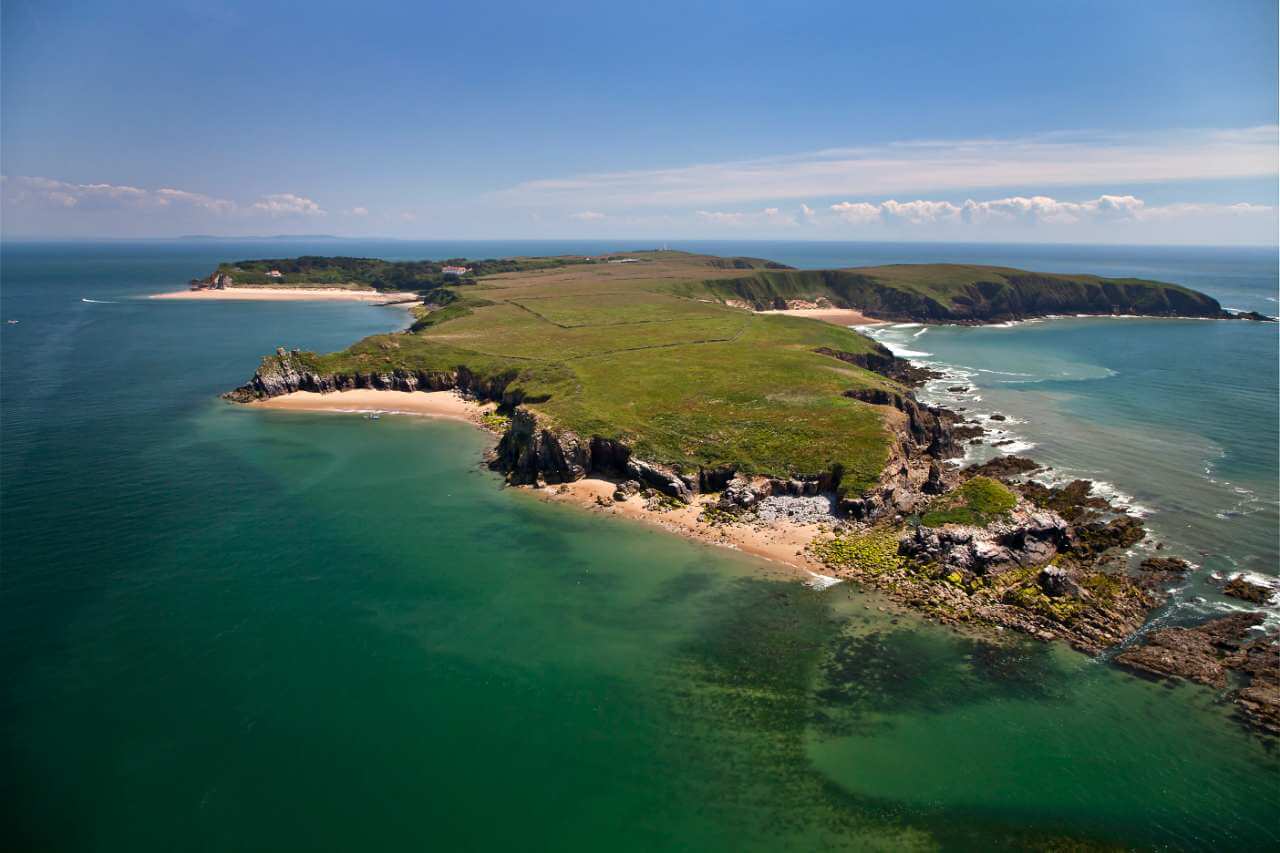
Caldey Island is also known as Ynys Bŷr after Saint Pŷr, an early Welsh saint. Established in the 6th Century – the monastery thrived through the Middle Ages, and today the island remains home to a number of Cistercian monks, who replaced the Benedictines in 1929.
There’s much to see and do, including a gift shop selling items made by the community, a tea room, stunning walks and a fabulous stretch of sandy beach at Priory Bay. Paul Jones Bay, on the north eastern coast of the island, is named after John Paul Jones – a famed privateer and one of the founders of the American Navy.
It seems likely he would’ve known Caldey via his faithful officer, the Tenby-born Leekie Porridge – local lore suggests Jones is buried in a rocky crevice near Ord Point, and that on a dark night tapping can be heard… all fantastical stuff of course, but in Pembrokeshire we enjoy a good legend!
THE END.
All photos are subject to copyright – the photos of Pembroke Castle and Caldey Island were provided by and are © Visit Pembrokeshire – the remaining photos are © Luke Rowlands.
Many thanks to Visit Pembrokeshire for the use of their photos – visit their website at https://www.visitpembrokeshire.com/ to plan your next holiday. Please note that Pembrokeshire is currently closed to tourists because of the COVID-19 crisis, so please #StayAtHome #SaveLives for now.
Here at Word Waiter Digital we produce engaging content to drive website performance, engagement and customer loyalty – we were commissioned by BBC Magazines to produce this holiday guide to Pembrokeshire, and hope you enjoyed it.
To find out more about our content services call our Director – Luke Rowlands – on +44 (0)7966 729775 or visit: https://www.wordwaiter.com/digital/
Leave your comment